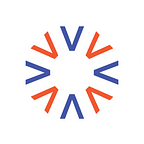How Innovation is Transforming the Way We Approach Disabilities
The Importance of Disability Awareness
Many more people are disabled in some way than those who are conventionally able might realize. While we’re often taught to define disability as something that requires special accommodation or equipment, up to 10% of us have some form of invisible disability — a chronic condition that has an impact that may not be immediately obvious.
Some of these invisible disabilities involve the mind or the emotional state, such as ADHD or depression. Others are related to internal systems, such as Crohn’s disease, asthma, or migraines. The key similarity to all of them is they have an impact on life in some way, whether it’s more sick days taken at work or a struggle to put on a brave face in the morning.
Disability awareness, and treating conditions as disabilities even when they don’t require some form of work on our part, helps make life easier for everyone. It also helps us shift the perspective on disability away from pitying people for having it to understanding that it’s something that can happen to any of us.
That said, the fundamental issue remains one of perspective. Disability is often a driver of innovation because it forces innovators to think from new perspectives and stop taking aspects of the world for granted. For example, a set of stairs may be a simple, elegant, and cheap solution to getting between the floors of a building. But people with heart conditions, breathing problems, or mobility issues may not be able to use them, or only use them with substantial risk.
As we move past the COVID-19 pandemic, these issues will become even more prominent. The pandemic is estimated to have disabled up to 1.2 million Americans in some way, although how and in what ways is still coming into focus.
Challenges With Managing Disabilities
Empathy and awareness are just the first steps, though. People living with disabilities have other challenges that need to be met.
Policy and Program
When it comes to disabilities, people can often struggle with the difference between “equality” and “equity.” The ongoing approach to hybrid work is a good example; demanding that everyone return to the office a few times a week may not take into account that for some people, that’s more of a task than others. The focus on what’s “fair” can ignore what’s most effective for different people.
Attitude
It’s difficult for anyone to think from another’s perspective; we know ourselves best. This can cause problems when understanding life with a disability. Many people rely on stereotypes or struggle with their own fears when they meet somebody with a disability, and that perspective can translate to larger problems. If this behavior is tolerated in the workplace or a larger society, it amplifies the problem.
Communication
While not everyone with a disability has an issue with some forms of communication, it’s worth thinking about it from the perspective of somebody who does. For example, a dynamic, visually-driven website is great, but can somebody who doesn’t see well make use of it?
Physical
And, of course, there’s the issue of the tangible world and how it’s designed. You may have noticed a wheelchair ramp for access to your workplace, but how many bathrooms are easily used by somebody who needs that ramp?
How Innovation is Helping the Management of Disabilities
Remote Work
During the COVID-19 pandemic, remote work became the norm for many office workers. And for people living with disabilities, this can be a mixed blessing. For some, remote work is a welcome relief and makes them more productive. For others, though, remote work tools aren’t optimally engineered.
To help those who need it most, tech companies are creating voice recognition, image recognition, and more accurate live closed-captions to help people with visual or hearing differences, and adapting their tools to fit the needs of people who may have cognitive differences.
Extended Reality (XR)
Extended reality combines augmented reality, virtual reality, and mixed reality features to develop a better workspace. For example, in an extended reality workspace, a person might be live streaming on a call and drawing on a virtual whiteboard, while in a meeting room their drawing is on an actual digital whiteboard, and meeting participants can see them in real-time.
In the future, XR might include robot avatars for field work, or robotic assistants that perform commands given remotely.
Artificial Intelligence
AI is already making life better for people who have differences in seeing, hearing, and interacting with the world. And it will be able to do even more in the future.
One example is the digital twin. A digital model of a real structure, updated in realtime from sensors embedded in it, the digital twin makes taking an existing building and testing accessibility modifications for it a much simpler process. It not only drastically reduces the cost of compliance, the twin can be shared with advocacy groups and other organizations who can make their own proposals and test different designs.
Outreach and Advocacy
Likely the most fundamental change has already started to happen. One of the struggles for people with any disability is to be seen and heard. Through the presence of blogs, podcasts, video hosting platforms, and social media, disabled people are able to push innovation strategy and demand that their needs be taken seriously. Instead of needing somebody to speak for them, to go to a meeting in a building that isn’t accessible or attend a hearing when they need to go to the doctor, they can speak directly, and be heard.
Innovation and disabilities will continue to intertwine as we move forward. To learn how your company can be more innovative, get in touch with our team!
This article was originally published on the IdeaScale blog here.
